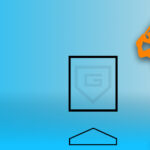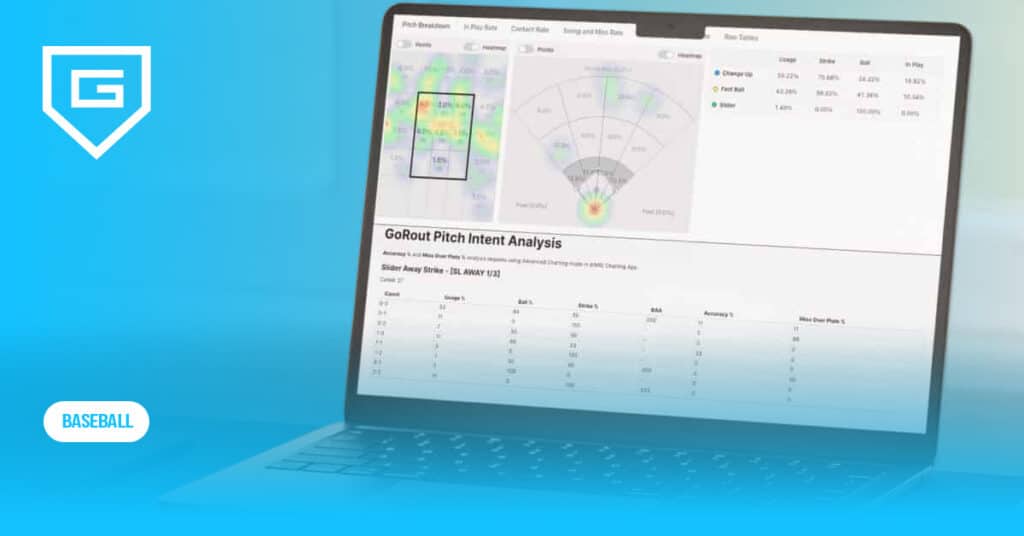Baseball Coaching Signs: The Language of On-Field Communication
Reading Time: 9 minutes
Reading Time: 9 minutes
Baseball coaching signs guide players through the complexities of pitching, hitting, and fielding with precision, confidence, and coordination. However, one of the main concerns for baseball coaches is whether the opposing team will try to steal signs and gain an advantage during games.
Advanced coach-to-player communication systems like GoRout Diamond transform the game by streamlining communication and increasing encryption of pitch calls.
GoRout Diamond helps teams focus on strategy and execution without the fear of their signs getting picked.
In this article, we will explore the significance of baseball coaching signs and the traditional methods teams use to communicate on the field. We will also cover how you can implement GoRout Diamond as an innovative solution in practices and games to ensure your players never miss a sign again.
The Role of Baseball Coaching Signs in the Game
Baseball coaching signs started as simple gestures or verbal cues between players and coaches. As unique ways to signal pitches, shifts, and plays on the diamond, their purpose has remained the same over time.
However, as baseball evolved, signs became more sophisticated and played a bigger role in strategy and communication on the field. Signs are now more complex and detailed, designed to help teams navigate every nuance of the game.
Baseball is a game where split-second decisions can determine the outcome. That means the ability to convey instructions quickly and accurately is essential. Effective sign communication allows teams to outmaneuver their opponents, exploit weaknesses, and take advantage of sudden opportunities.
Baseball signs are a coded language for secure communication that minimizes risk of the opponent learning your team’s gameplan.
Fundamentals of Baseball Signs
Baseball signs are a universal language of communication between coaches, players, and teammates, essential for the game’s strategic nature.
Understanding and using these signs can mean the difference between a baserunner getting a good jump or being picked off.
- Hand signals are the most visible signs on the field. A third base coach might brush his hand on his sleeve to indicate a steal. This player’s ability to interpret the sign correctly and get a good jump towards the next base can significantly impact the game’s outcome.
- Verbal signs come into play when it’s challenging to see hand signals. A coach might shout a seemingly ordinary phrase with a pre-determined meaning, signaling the batter to bunt, allowing a base runner on second base to advance.
- Indicator signs are crucial for the element of surprise. A coach might touch the brim of their cap, which is a sign that the next hand signal is the one to focus on. Using an indicator allows coaches to deploy a number of deke signs to keep the opponent guessing.
- Number signs are often used by catchers to communicate with pitchers. Holding down one finger might signal a fastball, two fingers a curveball, and four fingers a changeup. Number signs vary from team to team and pitcher to pitcher.
- Sequence signs require attention to detail and involve movements that might look random to the unaware. For instance, a coach might touch his nose, then his knee, and then his ear. If the knee was the indicator, the ear might mean “steal second base,” and a good jump by the runner could lead to a successful steal.
Specific signals and codes vary between teams, but underlying principles remain consistent. Many teams use a combination of each type of signs in order to stay one step ahead of their opponent.
Offensive Baseball Coaching Signs
Coaches create signals with hitting instructions or base running maneuvers for offensive plays that maximize scoring opportunities. Every hitter, base coach, batter and runner must be on the same page for offensive baseball signs to have their full effect.
Baseball hitting signs
Baseball hitting signs provide batters with guidance and direction during each at-bat. The coaching staff—the head coach, hitting coach or third base coach—instructs these baseball signs.
Hitting signs enable the team to maintain offensive pressure, exploit defensive weaknesses and capitalize on scoring opportunities.
- Swing away: Give the batter a green light to swing at the upcoming pitch.
- Take pitch: Directs batters to let the pitch go by without swinging.
- Bunting: Signals the batter to execute a bunt by redirecting the ball with a short swing.
- Sacrifice bunt: Sacrifices the batter’s at-bat to advance runners.
- Push bunt: Guides batters to bunt towards the first base side.
- Drag bunt: Instruct the batter to bunt towards third base while running toward first.
- Squeeze bunt: The runner on third base breaks for home plate as the batter bunts.
- Slash bunt: Batter squares to bunt early to draw in infielders, but pulls the bat back and swings away.
Base running signs
Base running signs guide baserunners to improve their chances of scoring runs. These signals are aimed at stealing bases and making smart decisions on offense—whether stealing bases or tagging up on fly balls, for example.
- Stealing bases: Signals a baserunner to attempt to steal the next base.
- Delayed steal: Instructs the baserunner to break after their secondary lead to catch the defense off guard.
- Fake steal: Deceptively simulates a steal attempt to create confusion or draw throws from the defense.
- Hit and run: Coordinates the batter to hit behind a baserunner attempting to steal, aiming to allow the baserunner to advance two bases.
- Tagging up: Guides baserunners to return to their original base before a fly ball is caught, allowing them to advance if the ball is hit deep enough.
Defensive Baseball Coaching Signs
Defensive baseball coaching signs guide pitchers through pitch selections, coordinate shifts and make necessary changes to outfield positioning. These indicator baseball signs must be clear and precise to maximize defensive strategy.
Pitching signs
Pitching signs dictate pitch type and location to guide pitchers through tactical decisions on the mound.
- Pitch type: Indicates to the pitcher the type of pitch to throw – whether it be a fastball, curveball, slider or changeup.
- Pitch location: Instruct the pitcher where to throw the pitch within (or around) the strike zone. Examples are high and inside, low and away or down the middle.
- Pickoffs: Indicator to the pitcher and infielders to attempt a pickoff move to catch baserunners off-guard and steal a quick out.
Fielding signs
Fielding signs coordinate infield and outfield positioning to relay throws and optimize defensive coverage.
- Infield shifts: Indicator to infielders to adjust their positioning based on the hitting tendencies of the opposing batter by shifting to one side or the other to maximize defensive coverage.
- Outfield positioning: This guideline tells outfielders where to position themselves relative to the batter, considering power, speed and tendencies.
- Relay throws: Coordinates relay throws from the outfield to the infield or from infielders to home plate for efficient ball movement and to prevent baserunners from advancing.
- 1st & 3rd defense: Instructs infielders and outfielders on defensive strategies involving runners on first and third base – including cutoffs, rundowns and double plays.
- Catcher throw downs: The indicator is for the catcher to make a quick throw to a base to catch a baserunner attempting to steal or advance.
- The wheel play: A defensive maneuver involving coordinated movement by infielders and outfielders to cover a bunt or potential steal attempt with runners on base.
- Back picks: Instructs infielders or outfielders to attempt a quick throw behind a baserunner straying too far from the base to catch them off-guard and make an out.
Creating Signs for Your Baseball Team
Improve communication and coordination in baseball by designing clear and straightforward signs and pitches, customizing them to fit your team’s needs and implementing strategies to ensure secrecy and prevent sign stealing.
Baseball signs should minimize confusion during gameplay. Avoid complex gestures or codes that players could misinterpret. Opt for simple hand signals or verbal cues that can be easily understood and executed on the field.
Consider the strengths and weaknesses of your players, as well as their offensive and defensive tactics.
Safeguard your signs to prevent opposing teams from sign stealing and gaining an advantage. Use indicator signs, change signs regularly and employ decoy signals (dekes) to confuse the other team.
The Psychology Behind Baseball Coaching Signs
Baseball coaching signs play a significant role in influencing player performance. Clear and well-understood signs can bolster player confidence by providing clarity and alignment with team goals, leading to sharper decision-making during critical game moments.
These signs also nurture trust between players and coaches, deepening the coach-to-player bond and strengthening communication and collaboration.
It empowers players to perform at their peak, believing in their own game and knowing their coaches have their best interests at heart.
Advanced Baseball Coaching Sign Systems and Strategies
Advanced baseball coaching sign systems and strategies go beyond simple gestures. Coaches use these sophisticated techniques to outwit opponents and secure a winning season.
Here’s how coaches use baseball coaching tools and advanced baseball signs during games.
- Incorporate multiple sign sequences: Use multiple sequences of signals for various plays, pitches or defensive alignments. By using different sequences for different situations, coaches keep opponents guessing and prevent them from stealing signs.
- Use decoys and dummy signs: Decoys and dummy signs deceive opposing teams and safeguard actual signals. Coaches from most teams incorporate fake signals or irrelevant gestures into their sign sequences, hoping to confuse opponents attempting to steal signs.
- Adapt signs during a game: Coaches must be prepared to adjust their sign systems on the fly. They may need to change sequences, introduce new signals or alter the meaning of existing signs to exploit weaknesses in the opposing team’s offense or strategy.
Using Advanced Technology for Baseball Coaching Signs
Wearable technology in sports continues to grow into a powerful tool for baseball coaches. Baseball players and their coaches use electronic pitch calling to communicate without worrying that opposing teams are stealing signs. GoRout Diamond is one great example of a trustworthy coach-to-player communication system.
What is GoRout Diamond?

GoRout Diamond is a comprehensive communication system consisting of a coach’s app and pitch-calling devices for players.
At GoRout, we aim to revolutionize pitch-calling in baseball by offering innovative technology that improves performance, facilitates rapid communication and optimizes training sessions, preparing your team for the game day.
Coaches leverage the GoRout electronic pitch-calling system to prepare practice routines, drills and game simulations for their baseball team.
Players use wearable wristwatches to access these resources in real-time and receive immediate feedback with position-specific messaging.
With GoRout Diamond, coaches and players collaborate seamlessly to win games and break communication barriers.
How GoRout Diamond works
Our baseball pitch-calling system boosts player performance and fosters team collaboration. GoRout Diamond enables instant strategy adjustments, coordinated pitch selection and optimized defensive positioning. Use GoRout to make quicker decisions and minimize errors.
GoRout equipment is approved for in-game use at professional, college, high school, and youth levels. This endorsement signifies that our product has undergone rigorous testing and meets the safety, quality and usability standards required for official use.
Coaches and players can confidently rely on GoRout Diamond during games to improve and protect their signs and pitches and boost team performance.
GoRout coaches application
The GoRout coaches application is intuitive, efficient, and designed for seamless operation. With a simple tap, coaches can swiftly send pitch calls, establish defensive shifts and indicate offensive plays.
The app’s user-friendly interface streamlines communication, enabling coaches to convey plays effortlessly to catchers, pitchers, runners and the entire team on game day.
GoRout player devices
GoRout baseball communication devices demand no setup, pairing or programming. Each device arrives fully encrypted and prepared to receive pitch calls straight out of the box. It ensures that teams can concentrate on the game without being burdened by technology installation.
Benefits of implementing GoRout Diamond
This cutting-edge solution can revolutionize your team’s communication on the field. Here’s a glimpse at its advantages:
- Offline accessibility: GoRout works without requiring WiFi, ensuring accessibility for practices and games in any location.
- Secure communication: All transmissions through GoRout are fully encrypted, ensuring secure data transfer between sender and receiver.
- Weather resistance: GoRout Diamond endures various weather conditions, including rain, snow, or extreme heat, and it maintains reliability regardless of the elements.
- Tailored solutions: Packages are fully customizable to meet your team’s specific needs, offering scalability and adaptability.
- Improved player development: GoRout Diamond facilitates player growth by offering customizable practice plans, drills, game simulations and real-time feedback and analysis during both practices and games.
- Comprehensive warranty: Customers are given peace of mind with a complete warranty covering breakage, instilling trust in the device’s reliability.
GoRout elevates your team’s performance and communication, pushing boundaries and unlocking new possibilities on the baseball diamond this season.
Success Stories from Baseball Coaches

Source: X
GoRout testimonials from over 2,000 teams testify to the system’s ability to create faster communication and help teams succeed on the playing field.
Conclusion
Effective on-field communication in baseball is essential for coordinating defense, executing offensive plays and maximizing performance.
Sports coaching technology has taken baseball signs from fundamental hand gestures to simple yet unpredictable game-time strategies for teams.
Cutting-edge platforms like GoRout Diamond help coaches optimize practices and streamline communication during games.
Get a quote and see how thousands of coaches have used our system to get the win this season.
FAQs about the Baseball Coaching Signs
What are common 3rd base coach signs?
If the third base coach touches various parts of their body – elbow, nose, belt, chin, hat, hat brim, ear and belly – it’s a signal for the base runner to steal the next base or any other designated play.
What do the signs in baseball mean?
In baseball, hand signals are used to communicate instructions and strategies to players. They include touching different body parts like
- The hat brim (bunt or hit and run)
- Belt (take the pitch)
- Nose (steal or hit and run)
- Ear (pitchout)
- Chin (pitch in the dirt)
- Belly (swing away)
- Wrist and elbow (brushback pitch)
How do you use baseball signs?
Coaches give signs using a combination of hand signals and gestures, for example, to convey plays, strategies and instructions. Players decode these signs to execute a steal, bunt, hit-and-run, or pitch-out.
How do you give pitching signs from the dugout?
Give pitch calls from any point in the dugout using the GoRout coach-to-player communication system. Send pitch signs to the catcher and pitcher through the player device and high-tech coaches app for streamlined communication.







